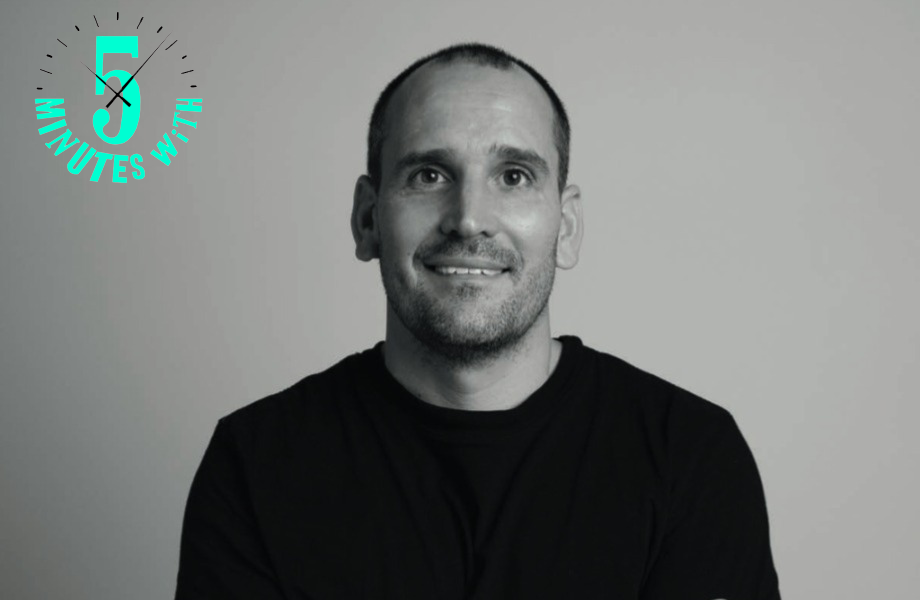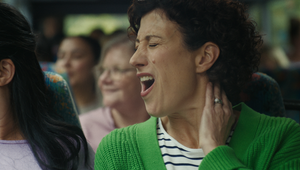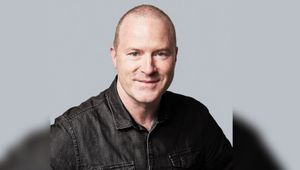
5 Minutes with… Simon Bagnasco

A serendipitous walk in the park with his dog led Simon Bagnasco to a chance encounter with Patrick Rowe who worked at Clemenger BBDO back in the day. Simon was looking to get into the university then and was considering courses in graphic or industrial design. The suggestion to go into advertising was planted and it struck a chord with him. He signed up for a course at the Royal Melbourne Institute of Technology and that was the start of an illustrious career.
Currently the head of creativity at Saatchi & Saatchi Australia, Simon was ranked #1 Asia Pacific ECD in One Club Rankings 2021, and has picked up multiple awards at Cannes, One Show, D&AD and Spikes in the course of his career. When you speak to the man, you get a sense of a grounded and practical individual who has no qualms in dispelling any fluffy notions about his craft.
“I think you can view ‘creativity’ like a trade - like plumbing or carpentry. Learning it requires mentorship, practice and learning on the job. And the desire must be there to keep plugging away,” says Simon. It is apparent Simon comes from the school of hard knocks, and approaches his profession with a steady focus to get it going every time he checks into the office. “I tell my creatives, don’t just wait for the idea to appear like a miracle - get to work and chase it down.”
Aptly enough, Simon first started writing ads for tugboats with an agency in New Orleans. Yes, tugboats – the most reliable vessel in the harbour and at sea. Simon shares, “After that auspicious start, I completed a course in Atlanta called the Creative Circus. I built a decent folio there and landed a job at an agency called Leagas Delaney in London. However, a week before I was due to start, a doctor found a tumour in my leg. The next 18 months of surgery, chemotherapy and radiotherapy gifted me with resilience and fortitude. These qualities have turned out to be helpful.”
Simon’s life experiences have added colour and depth to the many unique interpretations he has adopted in his work, often with a witty twist that is realistic and delivers great results. Consider his ‘cat lady’ approach for Devondale Dairy, one of many for the client; and his bold idea for Radiant washing detergent: to buy and return clothes that have been madly soiled in crazy, wacky situations to see if they pass the test at the shops. This integrated campaign generated a 30% year on year increase in sales for the brand.
The most recent highlight has to be the Donation Dollar campaign at Saatchi & Saatchi Australia, which has turned out to be the most globally awarded idea of the year in 2021. But as Simon shares, he always looks forward and onwards to the next big campaign. And there’s something exciting brewing in the background that will hopefully be announced soon.
LBB> What were your initial insights into the world of advertising?
Simon> When you start out, the best thing to do is find mentors. Mentors whose work, taste and creative ambition you aspire to emulate. Andrew Ostrom was that person for me and we’re still mates 20-something years later.
LBB> How has that mindset evolved and changed to where you are today as executive creative director at Saatchi & Saatchi Australia?
Simon> My role has changed, but my mindset is not entirely different. As a creative, the biggest change over time comes from the influences you draw from. I’m still inspired by films, books, stories, etc., but, as you get older and face a myriad of life events, it affects how you view and interpret ideas.
It’s your personal experiences, more so than what you’ve read, watched or seen, which shape your taste and attitudes to the ideas you’re viewing.
LBB> What lessons have been ditched and relearnt, and what new ones have emerged to impart to young creatives?
Simon> If there’s one thing I’ve learnt, it’s that you should only work with people you admire. People you are inspired and challenged by – in equal measures. If you don’t have that, you’re probably at the wrong place.
When you start out, you have two routes. Stay true to what got you here in the first place: your taste and how you apply that taste creatively to make something inventive and original. Or become peer-obsessed, rudderless, dead-hearted award husks. Both options are available.
LBB> What are the evolving demands that have shaped your modus operandi as a creative and how you approach a brief?
Simon> When I first started, it was expected that we had to be good at art directing, writing scripts and copy, and fitting your ideas into various boxes. Now, your ideas are unencumbered by typical ‘media shaped rectangles’. However, that means you have to be willing to explore broader terrain. And broader terrain requires broader thinking.
LBB> Yogi in full meditative state vs acrobatic juggler. How do you get into your zone and clear your space to work creatively?
Simon> I just drink coffee and quote Chuck Close, ‘Inspiration is for amateurs, the rest of us get to work.’
LBB> What defines your creative style and is there a pet genre that gets you going?
Simon> I just like the shock of the new.
LBB> Would you consider Donation Dollar to be an important legacy campaign and what defines its success?
Simon> There's currently six million coins in circulation in Australia, with another six million sitting with the banks waiting to be circulated, and another six million at the Royal Australian Mint waiting to be circulated globally. They will end up minting a total of 25 million. It’s going to be a 30-year process. I think that’s pretty significant.
I would hope Donation Dollar might lead to more charity-agnostic thinking from our industry. For instance, big ambitious platforms helping society at large. The campaign is proof that you can affect change in a big way. Additionally, the Royal Australian Mint has had a lot of interest from other countries following the campaign, so that is really exciting.
A campaign is also successful when it becomes a genuine part of culture and people talk about it. Personally, it was very moving to have family members and friends sending me pictures of their children with the coins and telling me what they were going to do with it. And I’m still getting them, so that’s pretty amazing.
LBB> What’s the next exciting project that you are working on and why does it resonate with you?
Simon> There are a lot of upcoming projects I’m enthused by. Some that seem infinitely possible. Some that feel as big and challenging as Donation Dollar. But that’s why you do this job.
I’m excited about everything, shocked by nothing.










